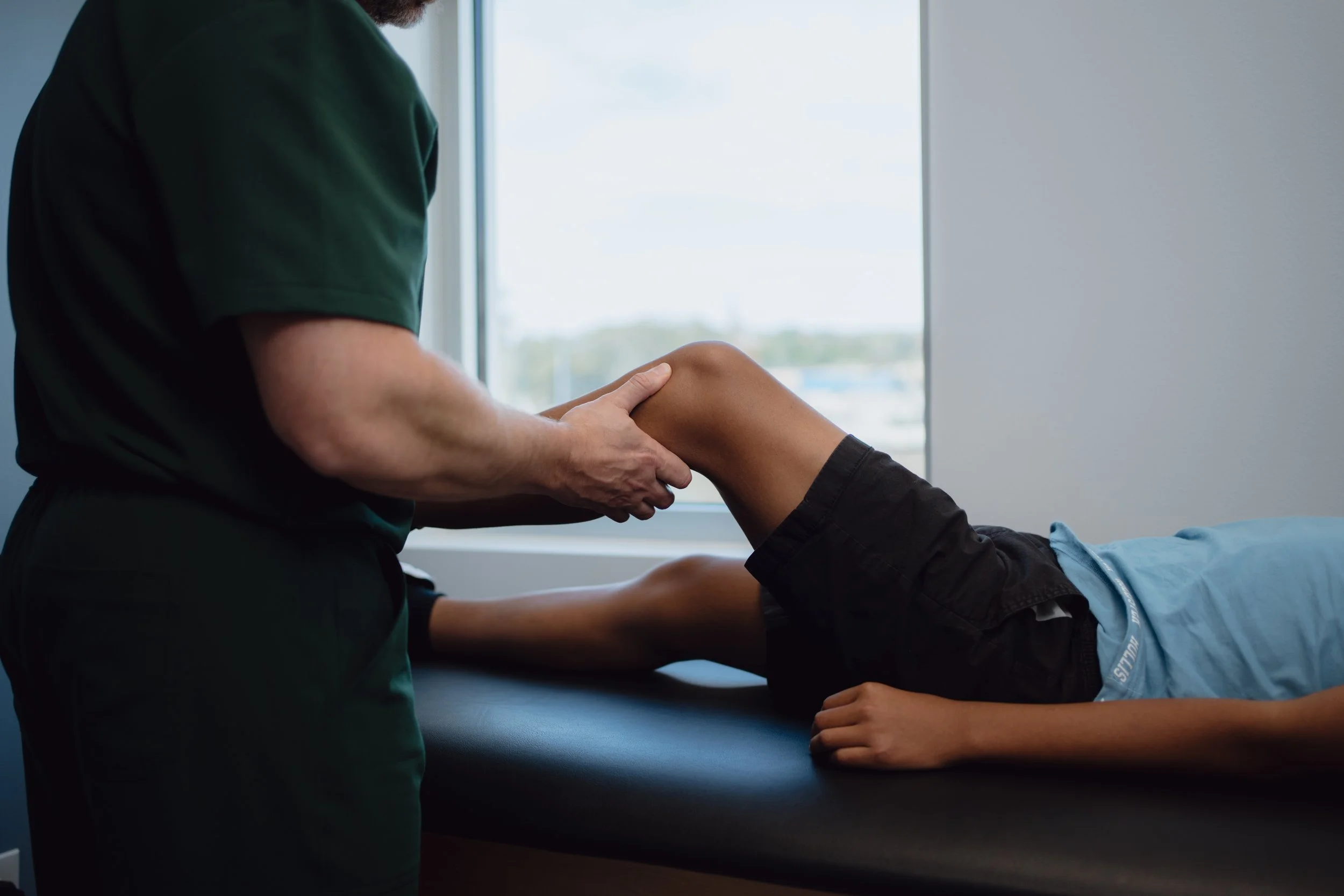
MCL and LCL Tear
Treatment In San Antonio
What are MCL and LCL Tears?
Injuries to the medial collateral ligament (MCL) and lateral collateral ligament (LCL) are common in sports, especially among young athletes. The MCL and LCL help stabilize the knee, supporting it during side-to-side movements. However, high-impact sports, sudden twists, or direct blows to the knee can result in painful tears to these ligaments, affecting stability and mobility.
The MCL is located on the inner side of the knee and helps prevent excessive inward bending, while the LCL is on the outer side of the knee and prevents the knee from moving outward. These ligaments work together to keep the knee stable during physical activities. When injured, MCL and LCL tears can cause pain, swelling, and instability.
MCL Tears
MCL tears typically occur when the knee experiences a force pushing it inward, which stretches or tears the ligament. Sports that involve sudden changes in direction, such as soccer or basketball, are more likely to lead to MCL injuries.
LCL Tears
LCL tears are less common but can happen during sports involving sudden side-to-side movements. This injury often occurs when there’s a force pushing the knee outward, like during a collision in football or hockey.
Symptoms of MCL and LCL Tears
Signs of an MCL or LCL tear may include:
Pain on the inner (MCL) or outer (LCL) side of the knee
Swelling or tenderness around the knee
Instability or a feeling of the knee "giving out"
Limited range of motion, especially with side-to-side movement
If you’re experiencing any of these symptoms, early evaluation is essential for a proper diagnosis and recovery plan.
Causes of MCL and LCL Tears
Both MCL and LCL tears are often caused by:
Direct impact to the inside or outside of the knee
Sudden twists or side-to-side movements during sports
Rapid changes in direction during activities like soccer, basketball, or football
Treatment Options for MCL and LCL Tears
Non-Surgical Treatment
Most MCL and LCL tears can heal with non-surgical treatments, which may include:
Rest and bracing to support and protect the knee
Physical therapy to strengthen surrounding muscles and restore knee stability
Anti-inflammatory medications to reduce pain and swelling
Surgery may be required for severe tears, particularly if both the MCL and LCL are damaged. Dr. Rush specializes in minimally invasive techniques, ensuring a quicker recovery for young athletes.
Surgical options may include:
Ligament repair to reattach torn fibers
Ligament reconstruction using tissue grafts in cases of complete rupture
FAQs about MCL and LCL Tears
-
An MCL tear affects the medial collateral ligament on the inner side of the knee, while an LCL tear involves the lateral collateral ligament on the outer side of the knee. Both ligaments help stabilize the knee, but they’re injured in different ways. MCL tears usually occur from a force pushing the knee inward, while LCL tears happen from an outward force.
-
Diagnosis typically involves a physical examination, a review of the patient’s medical history, and imaging tests such as X-rays or MRI scans to assess the alignment and condition of the knee structures.
-
Symptoms of MCL and LCL tears include:
Pain on the inner (MCL) or outer (LCL) side of the knee
Swelling and tenderness around the injured ligament
A feeling of instability in the knee or it “giving out”
Restricted range of motion, especially during side-to-side movement
If you experience these symptoms, seeing a specialist like Dr. Rush can help diagnose the injury.
-
Most MCL and LCL tears don’t require surgery and can heal with rest, bracing, and physical therapy. However, if the tear is severe or if both ligaments are damaged, surgery may be recommended to restore full knee function and stability.
-
Recovery time varies depending on the severity of the tear and the treatment chosen. Non-surgical recovery may take several weeks to a few months, while surgical recovery could take longer. Dr. Rush will create a personalized recovery plan to help you return to sports safely.
-
While not all injuries are preventable, you can lower the risk by:
Strengthening the quadriceps and hamstring muscles
Incorporating warm-ups and stretching into your routine
Wearing protective braces for sports that involve high-impact or collision
-
If you experience persistent pain, swelling, or knee instability, it’s important to see a specialist. Early diagnosis and treatment can prevent the injury from worsening and help you return to activities faster. Contact Dr. Rush to schedule a consultation.
-
Dr. Rush has extensive experience treating knee injuries in young athletes. Using a patient-centered approach, he offers both non-surgical and surgical options to help young athletes recover fully and return to their sports with confidence. Contact our team today.

Meet Your MCL and LCL Expert, Dr. Rush
Dr. Jeremy K. Rush, MD, FAAP, is San Antonio's only orthopedic surgeon who is Dual-Fellowship Trained in pediatric orthopedic surgery and sports medicine. He specializes in arthroscopic surgery of the knee, shoulder, elbow, and ankle, as well as the treatment of fractures and other injuries in young athletes.


